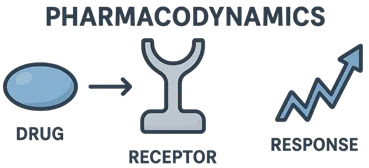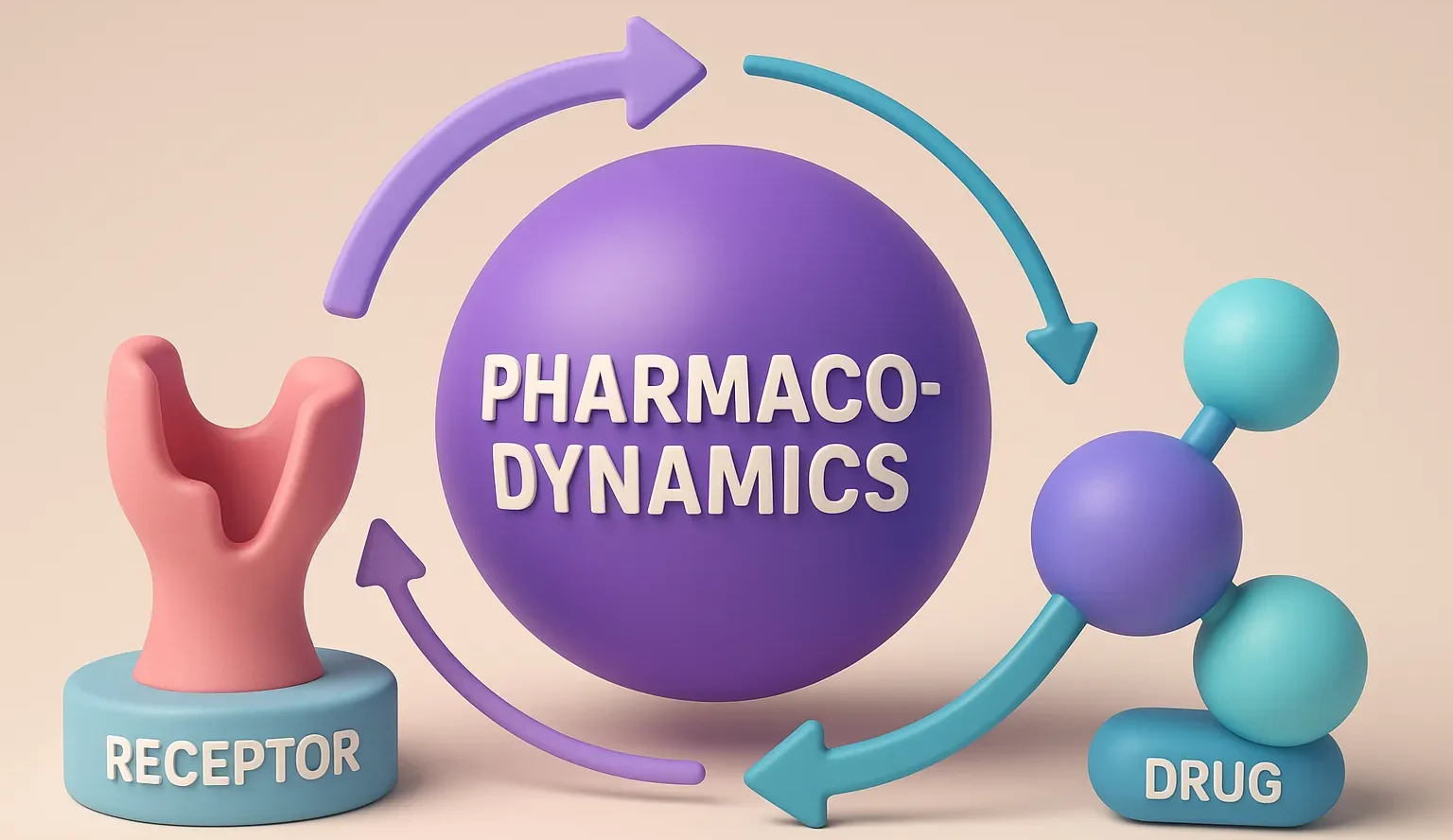Pharmacodynamics
- Pharmacodynamics refers to what the drug does to the body – including the biochemical and physiological effects of drugs and their mechanisms of action.

Principles of Drug Action
-
Stimulation
- Increases the activity of a specific organ or system.
- Example: Adrenaline stimulates β1-receptors to increase heart rate and contractility.
-
Depression
- Decreases the activity of a body system or function.
- Example: Barbiturates depress the CNS leading to sedation or anesthesia.
-
Irritation
- Causes mild inflammation or discomfort that leads to a therapeutic response.
- Example: Capsaicin cream causes irritation that helps relieve pain by depleting substance P.
-
Replacement
- Supplies deficient substances in the body.
- Example: Insulin in diabetes, thyroxine in hypothyroidism.
-
Cytotoxic Action
- Drugs that selectively kill specific cells, often used in cancer treatment.
- Example: Chemotherapeutic agents like cyclophosphamide destroy malignant cells.
Mechanisms of Drug Action
Drugs exert their effects by interacting with specific targets:
-
Enzymes
- Drugs may inhibit or activate
- Inhibitors: Aspirin irreversibly inhibits COX enzymes.
- Activators: Some drugs enhance enzyme activity (less common).
- Example: Neostigmine inhibits acetylcholinesterase, increasing acetylcholine.
-
Ion Channels
- Drugs can block or open ion channels to affect ion flow across membranes.
- Example: Lidocaine blocks sodium channels, preventing nerve conduction (local anesthesia).
-
Transporters (Carriers)
- Drugs can inhibit transporters involved in the movement of substances across membranes.
- Example: SSRIs like fluoxetine inhibit serotonin reuptake transporters.
-
Receptors
- The most common drug targets.
- Drugs may act as:
- Agonists: Activate receptors (e.g., Salbutamol on β2 receptors).
- Antagonists: Block receptors (e.g., Propranolol on β receptors).
- Partial agonists: Partially stimulate receptors (e.g., Buprenorphine).
- Inverse agonists: Reduce basal receptor activity (e.g., Rimonabant on CB1).
Click Here to Watch the Best Pharma Videos

